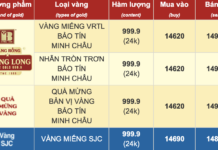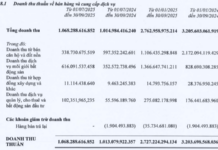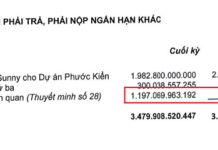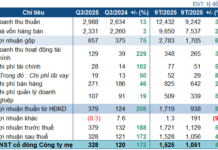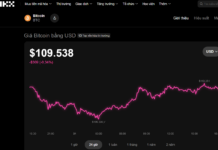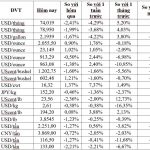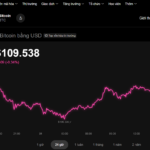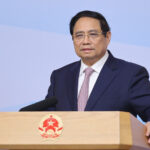Gold prices have stabilized in Vietnam, with the State Bank’s intervention helping to curb speculation and reduce the price gap with the international market. On July 3rd, the price of gold bullion was listed by the Saigon Jewelry Company (SJC) and four state-owned commercial banks at 74.98 million VND per tael for buyers and 76.98 million VND per tael for sellers.
Investors lose interest in gold
A month ago, the State Bank began selling SJC gold bars through the SJC company and four state-owned commercial banks. Since then, gold prices have dropped significantly from their peak of over 92 million VND per tael in May 2024, narrowing the gap with global prices to around 5 million VND per tael. The frenzied price fluctuations of the past have subsided, along with the long queues of people looking to buy gold for speculative purposes.
A senior leader at the State Bank shared that hundreds of thousands of taels of SJC gold have been sold in the past month, greatly reducing the price difference with international markets. Moving forward, the State Bank intends to continue this strategy to meet the demands of the people and stabilize the market.
Representatives from Vietcombank, Agribank, BIDV, and VietinBank shared that while there are still many customers registering to buy gold online, the demand is not as high as it was a few weeks ago. Some customers who successfully registered to buy gold did not show up for their scheduled appointments to make payments and collect their purchases. Bank staff tried to contact these customers, but their efforts were in vain.
The stagnant gold prices over the weeks have discouraged potential investors. “I wanted to buy a few taels of gold bullion when the price dropped from 92 million VND to 76.98 million VND a few weeks ago, but I couldn’t register online, so I decided to put my money in savings instead,” said Nhat Thanh, a resident of Phu Nhuan District.
Gold expert Tran Duy Phuong affirmed that many investors are indeed losing interest in gold. For almost a month, SJC gold bar prices have remained unchanged, leaving those with a penchant for speculation and “surfing the waves” unable to pursue their strategies. Phuong acknowledged the effectiveness of the State Bank’s measures in stabilizing the gold bar market and narrowing the price gap between domestic and international markets.
Associate Professor and Dr. Nguyen Thi Mui, a member of the Advisory Council for Financial and Monetary Policy, concurred that the State Bank has successfully lowered SJC gold prices. She emphasized that while this is an initial success, there is a need to amend Decree 24/2012/ND-CP on gold business management to ensure a more stable market.
Professor and Dr. Hoang Van Cuong, a member of the National Assembly’s Finance and Budget Committee, also commended the State Bank’s efforts in controlling gold prices and preventing market manipulation by certain groups.
On the other hand, Dr. Nguyen Duc Do, Vice President of the Institute of Finance and Economics (Academy of Finance), noted that while the State’s direct sale of gold bars to citizens has narrowed the price gap between domestic and international markets, he suggested that if the State does not encourage gold holdings, it should maintain a reasonable price difference instead of aligning domestic prices with global ones.
By doing so, citizens will perceive gold investment as risky, thus reducing the demand for gold. Additionally, when amending Decree 24, considerations should be made to authorize the State Bank to intervene when the domestic gold price deviates from the global price by 10%.
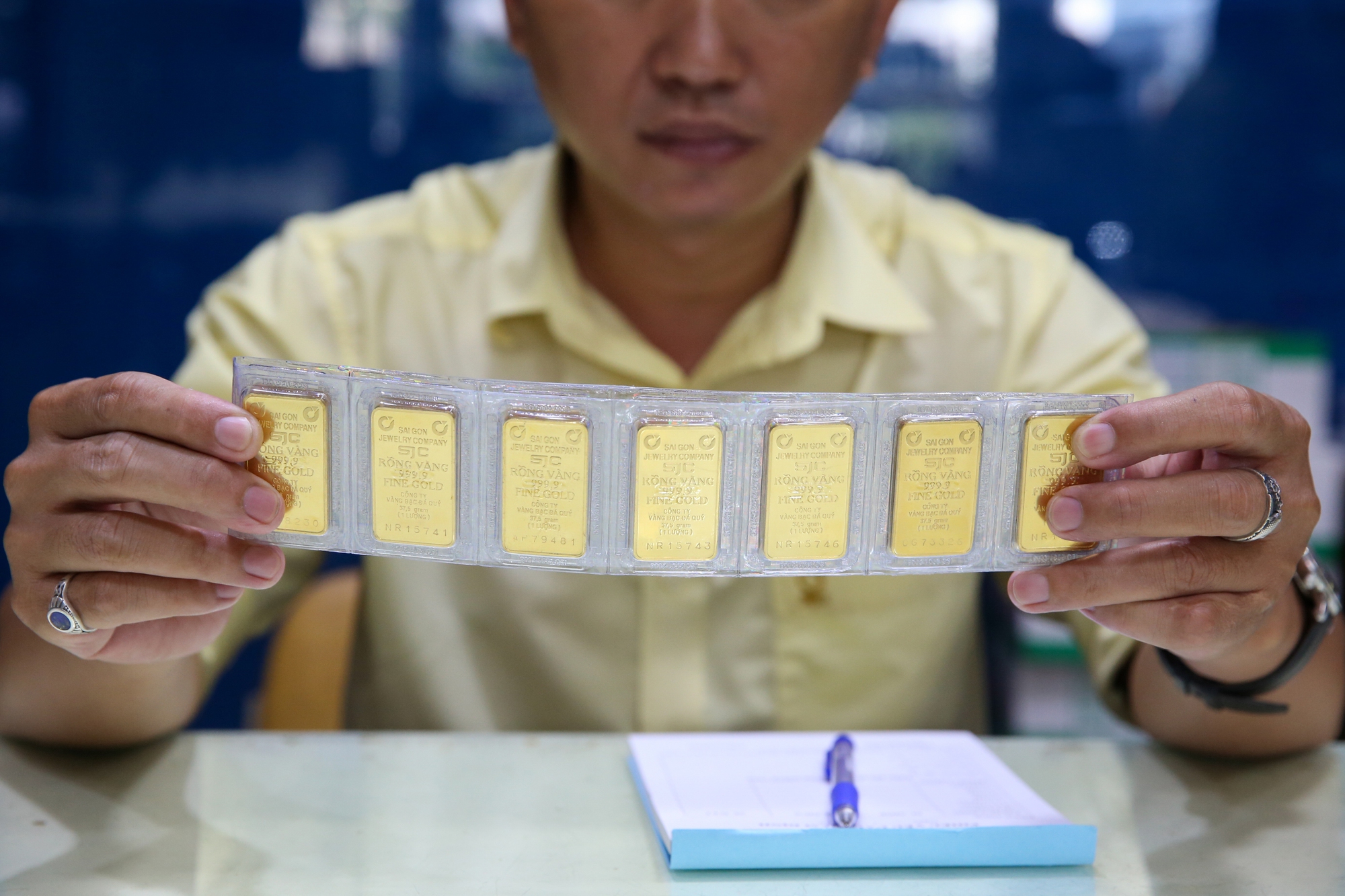
Gold transactions at the SJC company are no longer as bustling as before. Photo: HOANG TRIEU
Remaining Challenges
At a workshop on market developments and price fluctuations in Vietnam in the first half of 2024, held in Hanoi on July 3, Associate Professor and Dr. Vo Thi Van Khanh from the Academy of Finance acknowledged the State Bank’s bold move to change the way gold is supplied to the market. Instead of auctioning gold, which often led to inconsistencies and shortcomings, the State Bank now allows state-owned commercial banks to sell SJC gold bars directly to buyers at gradually decreasing prices. This approach has effectively curbed speculation and quickly narrowed the price gap between the domestic and international markets, as well as between gold bars and gold jewelry, and between different gold brands.
Economist Ngo Tri Long commended the State Bank’s intervention measures for their effectiveness in narrowing the price gap between domestic gold bars and international markets, in line with the government’s and prime minister’s directives. However, he pointed out that there are still issues to address, such as the existence of two types of gold prices in the market. The black market gold price is higher than the price offered by units selling stabilized gold by about 3-4 million VND per tael. For example, on June 29, in Hanoi, gold bars were being bought by black market gold shops for 79.5 million VND per tael, while the buying price at SJC was only 74.98 million VND per tael.
This price difference has led to the emergence of “gold scalpers” and people queuing to buy stabilized gold to resell in the open market, causing instability. Long argued that the current solution does not adequately meet the people’s gold needs. With global gold prices predicted to continue rising and the existence of a “dual-price” market in Vietnam, along with less attractive alternative investment channels, people may rush to buy gold again if this measure is implemented long-term. This would result in money being tied up in gold instead of being invested in production and business, making it challenging to combat goldization.
To stabilize the gold market, Long suggested changing the mindset and management approach, aligning with market principles. He emphasized the urgency of amending Decree 24 to address current shortcomings. He proposed returning gold bar production and business operations to enterprises, suggesting that commercial banks should focus on derivative products instead of acting as gold bar trading intermediaries. If they wish to engage in gold bar trading, they should establish independent gold companies.
Long advocated for shifting from gold bar transactions to transactions involving other gold products (gold certificates, derivatives, etc.) on a centralized trading center. He recommended allowing the Commodity Exchange to trade gold futures through standard futures contracts, as practiced in advanced countries worldwide. Participants in this market would need to meet stringent criteria and be authorized for gold import and export.
Long also suggested creating a distribution system that enables people from all regions to transact conveniently and promotes equal opportunities for all economic sectors, serving a large number of people in both urban and rural areas.
Gold jewelry prices narrow the gap with gold bars
(To be continued)
Choose stocks for “Tet” festival celebrations
Investors should consider choosing stocks in the banking industry with good profitability, healthy real estate, and abundant clean land reserves. In addition, the group of stocks in infrastructure investment, iron and steel, and construction materials should also be considered.
Market Update on February 3rd: Crude oil, gold, copper, iron and steel, and rubber all decline together.
At the close of trading on February 2nd, the prices of oil, gold, copper, steel, rubber, and coffee all saw a simultaneous decrease, with iron ore hitting a two-week low.








